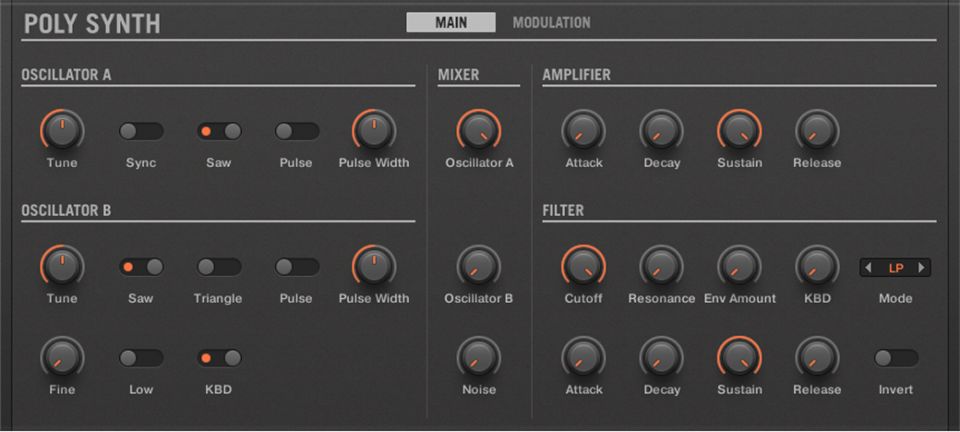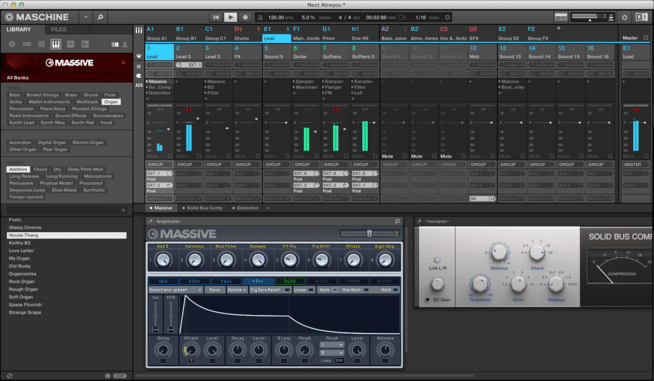

Most of the rear panel is unchanged, housing all connections to the outside world including the line and headphone outs, and the mic/line ins, all of which have a tiny gain knob. The displays are the same (there’s no touch upgrade), and you get the same wide, super‑sensitive pads. They really add to the overall luxury feel. They are now larger, all metal and have a damped action that doesn’t suffer from the variance I’ve noticed on my MkIII and Komplete Kontrol keyboard. The eight touch‑sensitive encoders have had an upgrade. It has that smooth gunmetal finish that you find on high‑end hi‑fi gear. The extra brains crammed inside the Maschine+ only make it about 10 percent heavier than the MkIII controller, but it feels significantly more substantial because the front and rear panels have been replaced with gorgeous anodised aluminium.

And they’ve enabled expandable connectivity, with USB MIDI hosting and support for external MIDI and audio interfaces. NI have ported several engines from their VST plug‑ins, giving you access to NKS‑format sound and effect patches. I’d have been happy with that as an initial feature‑set, but there are some exciting surprises. I’d guessed it would have Maschine’s internal suite of effects and its sound sources: namely sample‑based kits, sample‑mapped instruments, the drum synth engines, and the Bassline monosynth. Rumours had suggested a standalone Maschine would be based around the MkIII, using its on‑board audio and MIDI interfaces. Standalone operation is the same as using a regular Maschine controller, without the computer‑based UI. It has an embedded processor running the Maschine software, with on‑board storage and an SD slot for user content. Maschine+ is a reworked version of the Maschine MkIII hardware that can detach from your computer and run standalone. So what is gained and lost in the move to mobile, and who is this for? Let’s find out. Maschine+ follows suit, and is Native Instruments’ first non‑native instrument.
#Maschine native instruments sound packs software#
The MPC Live and X saw the MPC software ported back to the hardware, using System‑on‑a‑Chip technology to combine some of the best aspects of a computer and a standalone groovebox. In 2017 Akai re‑took the initiative and capitalised on the trend for computer‑free composing and performing. The next MPCs followed Maschine down the hybrid route, with a range of hardware controllers acting as front‑ends to a Mac/PC‑based MPC app and plug‑in. Maschine had access to processing power and plug‑ins, and could slot into the DAWs that had become the primary workspace for many producers.Īkai found themselves on the back foot, and the previous year’s Renaissance was to be the last of the classic standalone MPCs. In 2009 the first Maschine took cues from Akai Pro’s MPCs, but by moving all the hard work to an attached computer NI opened up the scope of what was possible.

#Maschine native instruments sound packs full#
The arms race of beat production workstations has come full circle. Is the Maschine+ the standalone music‑making box you’ve always dreamed of?


 0 kommentar(er)
0 kommentar(er)
